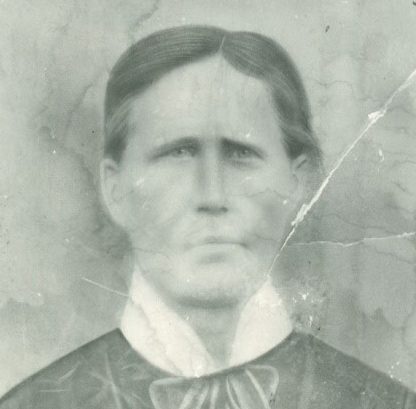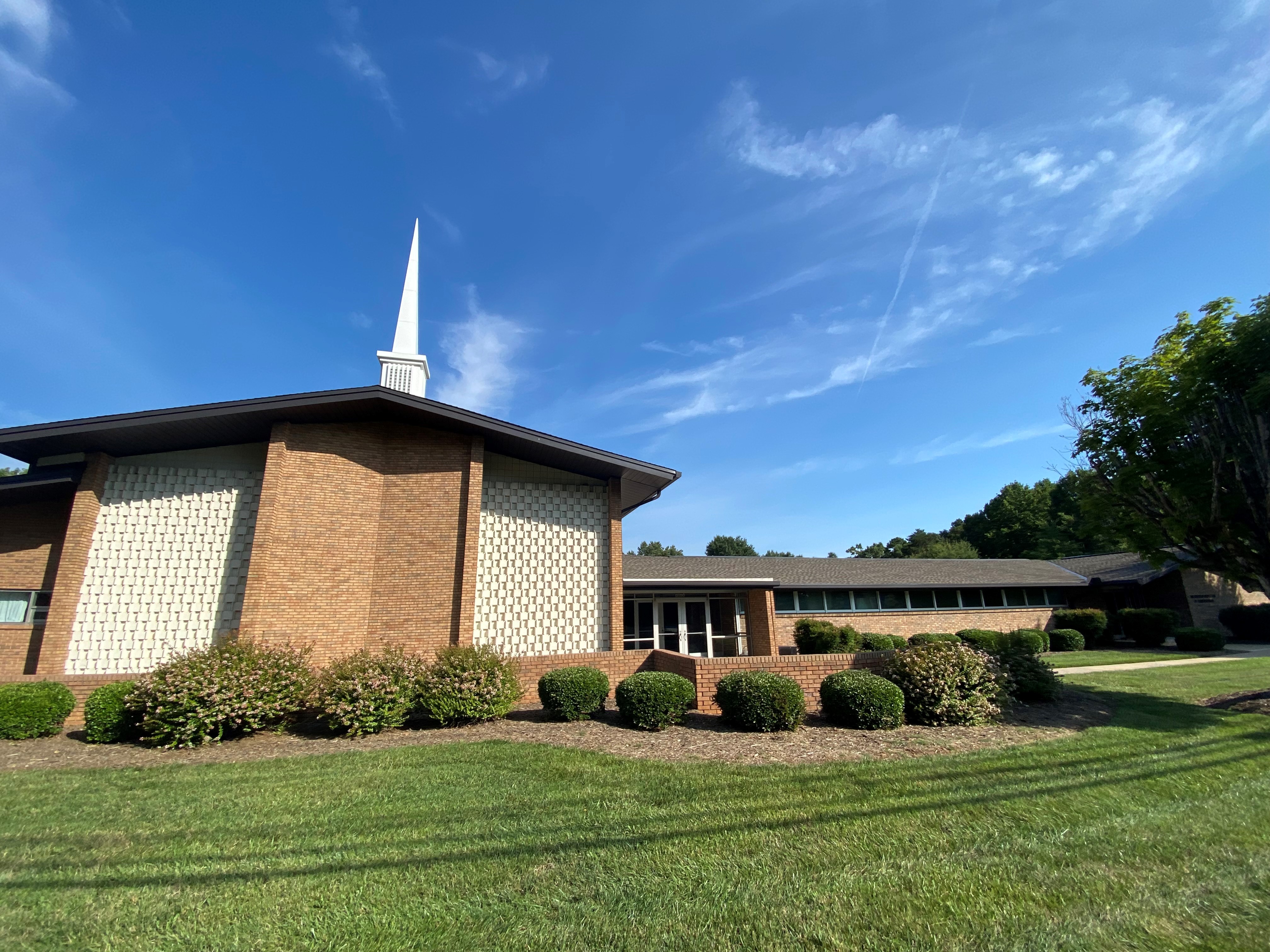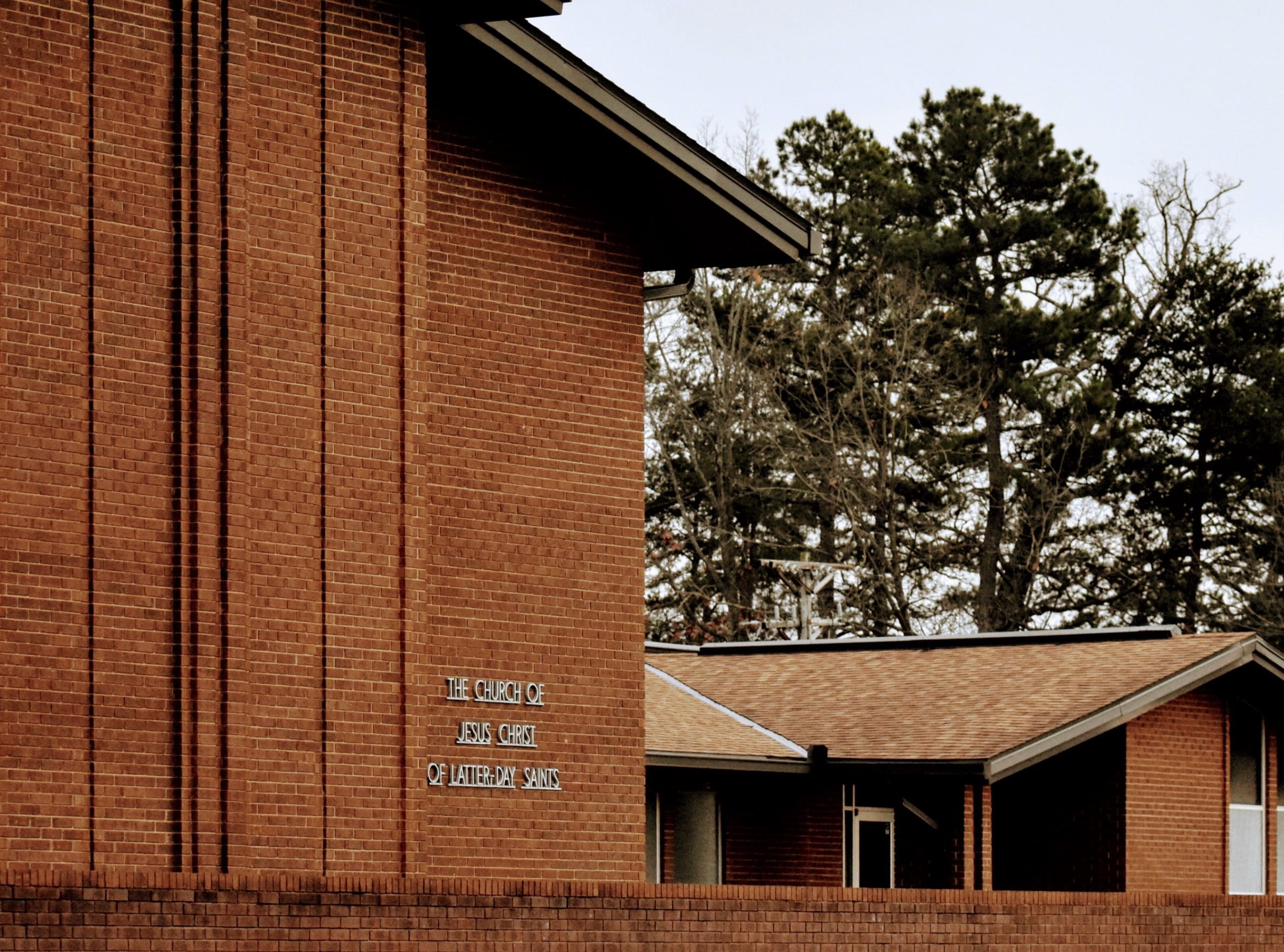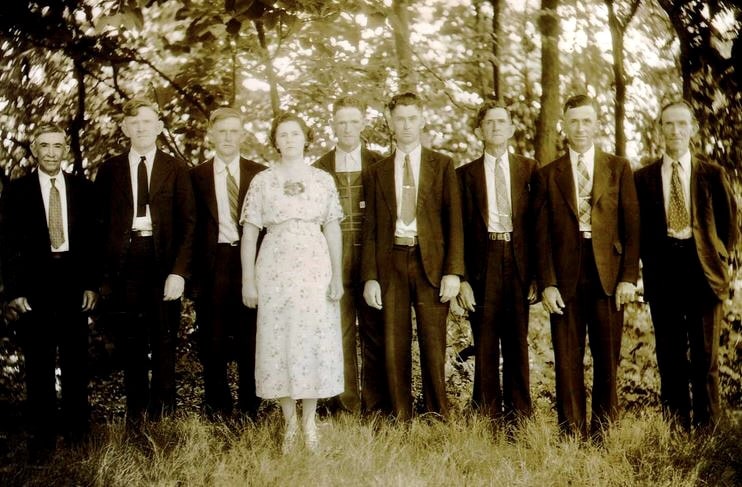Special thanks to Thomas Emmett Winters and his daughter Charlotte Winters Frye for the family history. And special thanks to Sister Donita Winters Hipps, daughter of Brownlow McDonald Winters, for consolidating the material and providing the photos.

Lucynthia Jane Winters Hicks, my great grandmother, was the first Winters family member baptized in the Church of Jesus Christ of Latter-Day Saints. Lucynthia Jane Winters was born in 1823 in Cranberry, Burke County, now Avery County, NC to John Winters and Nancy Daniels.

Missionaries came to the Elk Park area of Mitchell (now Avery) County, in the 1880s to preach the gospel. Lucynthia’s husband, Andrew Hicks, was baptized in 1885.
Lucynthia journeyed west during the 1890s to the Salt Lake Valley with her son, Martin Hicks, and his family. Martin and his family and several of his brothers and their families were baptized members of The Church of Jesus Christ of Latter-Day Saints. Three of Martin Hicks’ children died (1900-1903) while they were living in Willard, Box Elder County, Utah and were buried there. Martin Hicks and his family then moved to Cardston, Alberta, Canada.
While Andrew Hicks left the church and returned to North Carolina, Lucynthia remained faithful to the church and remained out west. She received her endowment at the Salt Lake Temple in 1907. Several of her family members, including her brother, Stephen Winters’ family, several cousins, and her Hicks’ sons and their families helped to colonize small Latter-Day Saints settlements in the Western States at the request of the church.
It can be surmised that Lucynthia visited with several of her children who had moved west at the bequest of the church. She then traveled north to the small community of Deming, Washington in Whatcom County to visit with her daughter, Sevisa Caroline Hicks Hatton. Lucynthia died in 1908 and was
buried in Mount Hope Cemetery in Deming, Washington. Her son, Martin Hicks had moved to Cardston, Alberta, Canada at that time. Two of her sons, Stephen Hicks and David Rosencrance Hicks moved to Manassa, Colorado and Chama, New Mexico, respectively.
Our Pioneer Heritage: The First Presidency calls members west to form Mormon Settlements in Manassa, Colorado
My great-great aunt, Jemima Catherine Franklin Johnson, was baptized in 1884. She married James Wesley Johnson, my great grandfather’s brother. They migrated West to Manassa, Colorado.

Great- Grandmother Lucynthia’s brother, Stephen M. Winters, was baptized in 1885. Though Stephen stayed in NC, his sons migrated to Manassa, Colorado and then to Klickitat, Washington in 1888. Her nephews, Benjamin H. Winters, David Vance, and George W. Vance were baptized in 1885 and migrated to Manassa, Colorado in 1888.
A few years after they were baptized, the First Presidency in Utah requested Mitchell County and East Tennessee members to migrate westward to Colorado to establish “Mormon communities” that would help to strengthen the church in these areas. In 1888, many of the families baptized in the Elk Park/ Cranberry region heard the call from the First Presidency of the church to migrate to the West to build up communities in the region of San Luis Valley in Colorado.
The Winters, Vance, Johnson, Hartley, and Hicks pioneers settled in the San Luis Valley and established communities in Fox Creek / Manassa, Colorado. This community would be called Manassa and Fox Creek. These early pioneers in the LDS church from the mountains of North Carolina are
buried in small desert cemeteries in Fox Creek, Colorado. Their children are buried there as well. Many of their children and grandchildren stayed in the church in that area and a few migrated to Utah, Idaho, Western Washington, and Cardston, Alberta, Canada.
Our Church Of Jesus Christ of Latter-Day Saints Heritage: Western North Carolina
Lucynthia’s eldest son and my grandfather, Marion Alexander Winters, was baptized along with his wife, Mary Catherine Webb Winters in 1886 in Elk Park, NC. Elk Park was then part of the East Tennessee conference region.

Mary Catherine Webb Winters (1886)
with their youngest sons Howard and David
They were the parents of nine children, including their youngest, my father, Howard Lindsay Winters (born 1895) (baptized 1913). My dad was named after the missionary who taught his parents the gospel in 1886, Philemon Lindsay from Paris, Idaho. Other children include Adolphus Alexander Winters (born 1871) who survived the Spanish-American War and the bombing of the U.S.S. Maine. (baptized 1887). Nancy Luscynthia (baptized 1891). Laura I. (baptized 1894). Willard Calvin (born 1880) who was killed in the Spanish-American War in 1899 and is buried in the San Francisco National Cemetery, California (baptized 1897). Daniel (born 1876) was also killed in the Spanish-American War in the Philippines in 1901 (baptized 1895), and is also buried in the San Francisco National Cemetery, California. And David Alfred (born 1890) (baptized 1903).
My grandfather, William D. Oakes, was baptized in 1921 along with his children, Lula Octavia Oakes Winters, Grady Oakes, Myrtie Oakes Clark, and Ronie Victoria. His cousins were also baptized at this time, Claudia Shook, John Shook. Julie Shook, Nettie Shook, Oleta Shook and Robert Lee Shook.
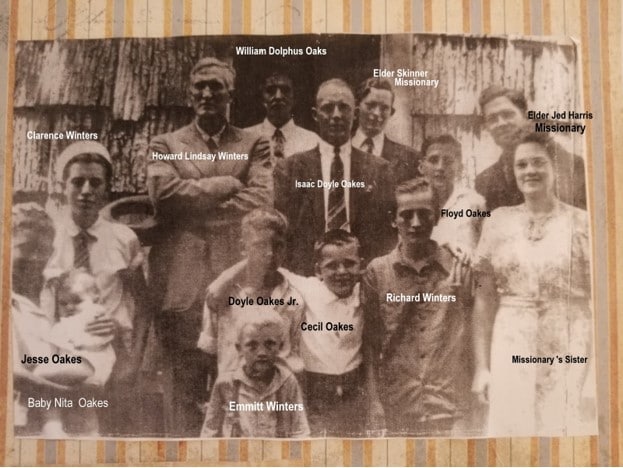
In August of 1925, a branch was organized in Crossnore. A meetinghouse was built on White Pine Road in the community where the Oakes, Shook’s, Clarks, and Winters lived. I am 3 years old in this picture.

Howard Lindsay Winters
Father
Lula and Clarence Winters
Mother and Brother
Howard Lindsay “Lenz” Winters married Lula Octavia Oakes. They raised their children in the White Pine community in Crossnore, Avery County. Though Lula (Mom) died when her two youngest were 6 weeks old and two years old, respectively, Howard (Dad) raised all seven of their living children in the church.
My brother, Clarence Arthur Winters, now deceased, discovered the Hollifield Branch in McDowell County in the late 1940s, ensuring that the family could continue going to church. My nephew Kenneth Shook, my sister-in-law Margaret Hampton Winters, and I were baptized on the same day in Armstrong Creek across the road from the Hollifield Chapel. I was 14 years old and vividly remember how cold the water was that day.
Me and my six living siblings have raised children, grandchildren, and now great-grandchildren in the Church of Jesus Christ of Latter-Day Saints. My great grandmother, grandparents, parents, uncles and aunts, and many cousins have held strong to the faith. Many of the great-uncles and aunts and cousins migrated westward with their families to Colorado and New Mexico because the church asked them to go. They were faithful to the gospel. Because of their steadfast testimony and devotion, my grandchildren are now sixth generation members of the Church of Jesus Christ of Latter-Day Saints, since 1886.
Our Church Of Jesus Christ of Latter-Day Saints Heritage: Hickory Stake and Beyond
Howard Lindsay “Lenz” Winters and wife Lula Octavia Oakes Winters are the parents of the “Winters Family” that have made their home in the Hickory North Carolina Stake of the Church of Jesus Christ of Latter-Day Saints and nearby areas for many years.
Children include Hazel Mae Shook (Gastonia), Leonard Calvin Winters (Canton OH), Brownlow McDonald Winters (Morganton), Clarence Arthur Winters (Lincolnton), Richard Eugene Winters (Canton OH), Tomas Emmett Winters (Marion), Carol June Ollis (Morganton), and three children that died within 5 months of each other in childhood – Ruth Mildred Winters (at the age of 4), Willie Orahlee Winters (at the age of 2), and Ralph Daniel Winters (at the age of 4 months).










More Detail on the Mormon Settlements in Manassa and Fox Creek Colorado
The Winters, Vance, Johnson, Hartley, and Hicks pioneers settled in the San Luis Valley and established communities in Colorado. The community would be called Manassa and Fox Creek.
The settlement of Fox Creek was located in Conejos Canyon, approximately sixteen miles southwest of Manassa. It was situated on a bench strip of land rising between the Conejos River and Fox Creek, one of its tributaries. Numerous factors recommended the area for settlement: the land was unusually productive, wood for fuel was plentiful and easily accessible, and, like the area at Blanca, it was sheltered from the prevalent winds of the valley. These factors had attracted several non-Mormon families into the vicinity before the first Mormons arrived in 1888. Thus, although it properly belongs among the Mormon colonies of the San Luis Valley, Fox creek was never a typically “Mormon” community, nor was it established as part of a centrally directed program from Manassa.
The first Mormon families to settle at Fox Creek came from the Southern States, primarily North Carolina and Tennessee. Some of them were personally acquainted with a Mr. Aaron Von Cannon, a non-Mormon southerner who was among the first to settle at Fox Creek and who bid his southern friends welcome to the area. Several of the Mormon families at Fox Creek had been neighbors and acquaintances in the South, and a number of them were related by marriage. In considerable measure, therefore, the Saints at Fox Creek represented an already-established community transplanted from the South to mountain canyon in southern Colorado.
Among the first Mormon families in Fox Creek were those of David Vance, Steven A. Hicks, and Isaac F. Holstelaw, all of whom arrived in 1888. Other Mormons had been in the area previous to this time, employed at saw mills, but it appears that they did not spend the winter months there and none settled permanently at Fox Creek.
In 1889, additional families of Saints arrived, attracted by the availability of government homestead land. In 1890, work was begun on a ditch to bring irrigation water from the Conejos River to the settlement. Fox Creek, which rises in the mountains some ten miles northwest of the settlement, is useful for irrigation purposes during the early part of the growing season, but it ordinarily dries up in the middle of the summer. There was thus a need for a supplemental source of irrigation water during the latter half of the summer. Work on the ditch continued at intervals until 1893, when it was first utilized for irrigation purposes.
The first three years following the arrival of Saints at Fox Creek passed without any apparent Church organization or activity. The record indicates that the first meetings in the area were not held until 1891, when Brother Vance began to take the lead in arranging for and directing such meetings as were held. A more formal organization was not long in following, and at a stake conference held in November, 1891, Brother Vance was set apart as presiding Elder of the Dependent Branch of Manassa Ward which was established at Fox Creek. Through regular meetings began to be held from that date, it was August, 1892 before an official Sunday School was organized.
The Mormon population at Fox Creek reached its peak in 1893, when it totaled 94 persons scattered throughout the general vicinity on homesteads. A small building was constructed that same year which served as both school and meeting house. However, from 1893 to 1990 the Mormon population gradually declined as the Saints grew discouraged over economic difficulties and the remoteness of their location. Some of those leaving Fox Creek moved among the saints in the valley. Others returned to their former homes in the South. Still others moved to Utah or Oregon. By the turn of the century, David Vance was the only Mormon family remaining at Fox Creek, and the Branch was soon afterwards disorganized.

